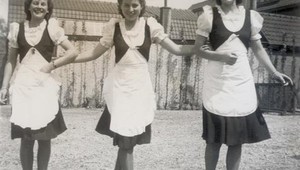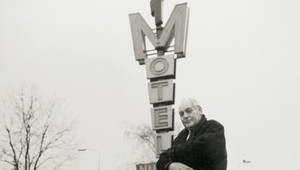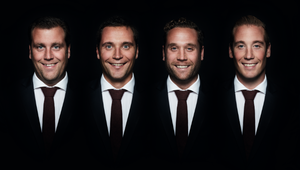The Van der Valk hotel chain
Founded in 1929 and of Dutch origin, Van der Valk is an international 4-star (+) hotel group.
Van der Valk is a family business: the hotels are exclusively owned and managed by members of the founding family. Currently the fourth generation is responsible for the management of the hotels.
Hotel dynasties are not uncommon. Hilton is one example. But the history of the Van der Valk hotels is unique.
The Dutch dynasty began in 1862, when Nicolaas Van der Valk bought a farm in Voorschoten, north of The Hague, called De Gouden Leeuw.
As the father of 25 children from two different marriages, it is not surprising that the Dutchman tried to diversify in order to make money. This led to the opening of a café with a terrace.
When Nicolaas died, Martinus, his youngest child, was only seven years old. However, it was he who made the family what it is today. In 1929, when his mother died, Martinus moved to the Gouden Leeuw, which he ran in addition to a butcher's shop. He added hotel rooms, a car dealership with a repair shop, a bus service, etc. His numerous trips for his car business gave rise to his hotel and catering concept: at Gouden Leeuw, you should sleep and eat like at home. The Van der Valk legend was born.
A business for every child
The group would not have grown so much if Martinus Van der Valk had not decided that each of his 11 children (6 girls and 5 boys) should have their own business. With this goal in mind, Martinus started buying existing establishments.
Most of the time, Martinus would get his hands on businesses that were not doing well and needed to be turned around. He then applied the family concept. This is how the family arrived in Belgium, during the 1958 World Fair.
Martinus chose a café in Brasschaat, on the Breda road, which at that time connected Rotterdam and Antwerp.
An Van der Valk and her husband Ben Wohrmann moved to the Dennenhof in 1958. They soon added about thirty wooden rooms. The first Belgian motel was born. And, at the same time, the first of the Van der Valk group.
It was only 10 years later, under the impetus of An's brother Gerrit, that the family specialised in building motels, starting with Nuland in 1968, the first hotel entirely designed and built by the Van der Valk family.
In Belgium
From Brasschaat, the family continued to grow in Belgium. Bert Wohrmann, the eldest son of An and Ben, turned to beautiful Wallonia.
His four sons are each responsible & manager of a Walloon hotel: Ben in Charleroi, Bob in Nivelles, Mathieu in Mons and finally Marco in Liège & Verviers.
Today
The hotel chain is the largest in the Netherlands (with around seventy establishments), but it has also expanded throughout Europe (Germany, Belgium, France, Spain) and in the Caribbean (Dutch Antilles). In total, there are nearly 120 locations worldwide. All hotels meet very specific criteria, especially in terms of family.
In 2019, the Van der Valk Group acquired the Sélys building, which was previously held by a direct competitor in the hotel industry: the Crown Plaza. The building appealed to the hotel group due to its exceptional character, rich history, and central location in the heart of Liège. This is the third hotel managed by Mr. Marco Wohrmann and his wife, Mrs. Anne-Sophie Wohrmann. The Sélys Hotel is therefore
Why the toucan?
It's one of the most frequently asked questions for the Van der Valk family: why do you have a toucan in the logo, and not a falcon? The answer comes from the acquisition of bird zoo Avifauna. The family was looking for a symbol for the whole family. After the war birds of prey caused bad memories for a lot of people because they were used as a symbol by the Nazis. As Gerrit van der Valk said: "If a falcon is asleep it is nothing, and when it hunts it looks like an eagle. A toucan is a beautiful, big, tropical bird, a cheerful animal, a social animal, that fits our identity so much better".
A historic building
The building where you are standing was built in 1891 as part of the facilities of the Verviers-Ouest train station, which was built in 1843 and inaugurated by King Leopold I.
This building served as a customs warehouse. The Verviers-Ouest train station was the first, and for a long time, the only train station in Verviers. It allowed the transit of goods, raw materials and passengers. The building was made of brick and limestone. Its classical architecture was as vital as the city’s prosperity. The station was a dead end, forcing trains to turn around in Verviers to go to Liège or Germany.
It was therefore in this train station that customs controls were carried out. A second station was built in 1878 to the east. After the First World War, the western station was too badly damaged and could no longer be used by travellers. It was therefore decided to build a temporary station, which became the present Verviers Central station in 1930.
After the abolition of goods transport in the 1960s, the former customs warehouse was left to deteriorate. But in the 2000s, the site was completely rehabilitated with the construction of a cinema, a shopping centre, a museum and the Hotel Verviers.
The Hotel Verviers has entirely preserved the facade of the former customs house and has fitted out its bowels with a modern, comfortable structure adapted to the needs of our century. Thanks to the use of geothermal energy, the renovation of the old railway station is fully in line with the principles of sustainable development and the desire to reduce its ecological footprint.


